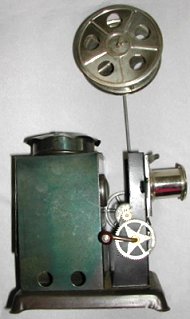 |
Cinematographs 2 movies on the magic lantern |
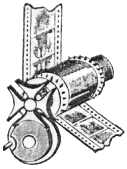 Maltese cross. |
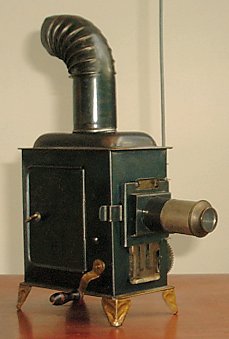 |
Probably
GEORGE CARETTE Russian iron toy cinematograph. No marks on the lantern. According to the golden triangle feet the maker could be George Carette, Nuremberg, Germany. Film transport by means of a Maltese cross (inside). Sizes: height: 10" (25.5 cm), length: 7.25" (18.5 cm), width: 3" (8 cm) (without handle). |
This model cinematograph was produced
by a French manufacturer, which is indicated by a small embossed stamp
on the front that reads “G.C. Co. N” which was the acronym for George
Carette & Company. It is also stamped D.R.G.M. on the film advancement
mechanism. It indicated that a design was centrally registered for all
of Germany and its colonies. The D.R.G.M. registration was introduced
1891. |
 |
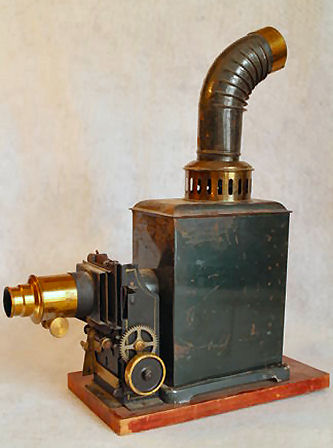 |
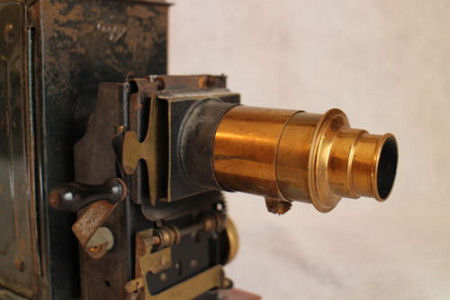 |
 |
| It measures 13” high with chimney and wood base, 10” in length and 4” wide. It has a hand cranked knob that turns a set of gears and advance a set of geared teeth. These teeth look like they would fit the grooves of film and would advance upon turning. There is also a spring loaded device that would hold the film under tension on the geared spool. It has a brass telescopic Lens holder that adjusts very nicely with a brass turning knob underneath to adjust focus. | |
|
Ernemann Cinematograph. |
|
 |
 |
 |
 |
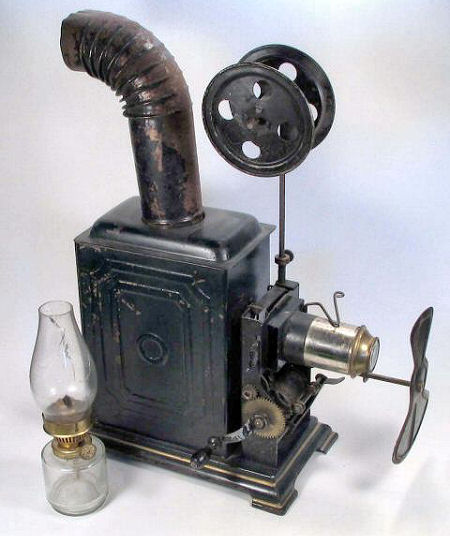 |
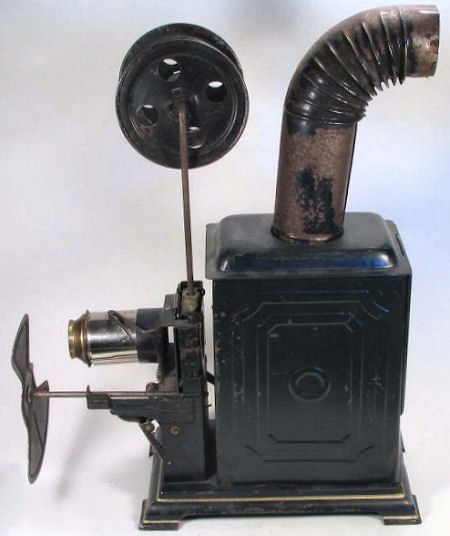 |
|
This cinematograph is provided
with an external shutter, placed in front of the projection lens, which
is very unusual. The back shows an entwined L and M, the trademark of Leonard Müller, Neurenberg, Duitsland. |
|
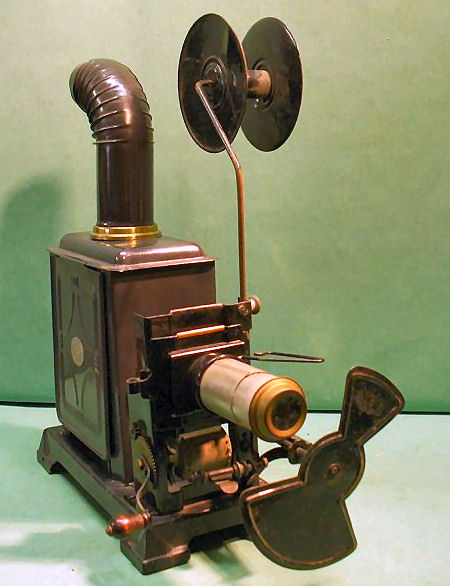 |
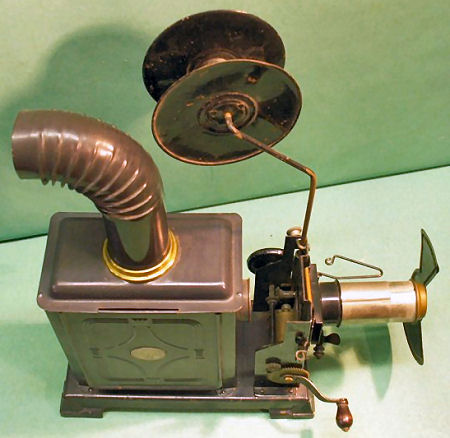 This cinematograph looks very similar to the cinematograph above, but this one is made by Ernst Plank (E.P. trademark on the hinged door on the side).
|
 ERNST PLANK Barrel shaped Kinematograph, made by Ernst Plank, c. 1900, with Maltese cross system intermittent and spring drive connection. Exchangeable objective holder for films or slides. Two coloured films in original E.P. boxes at the background. |
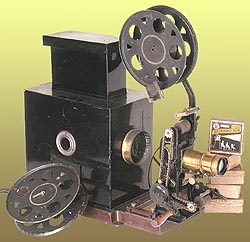 ERNST PLANK
|
 GEBRÜDER
BING NÜRNBERG |
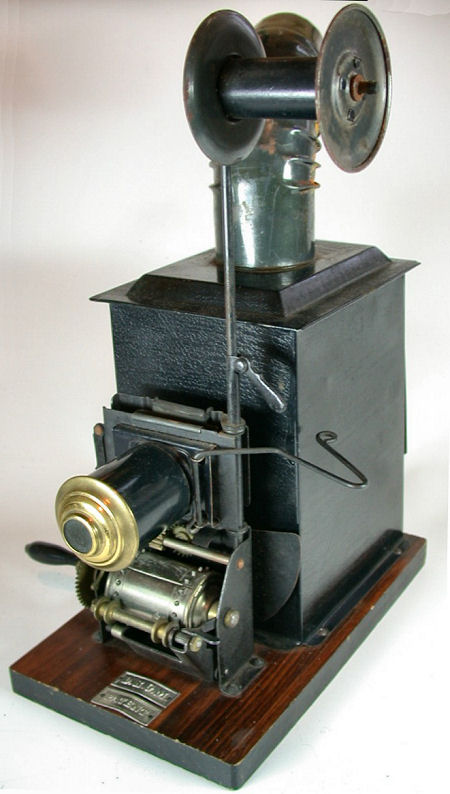 |
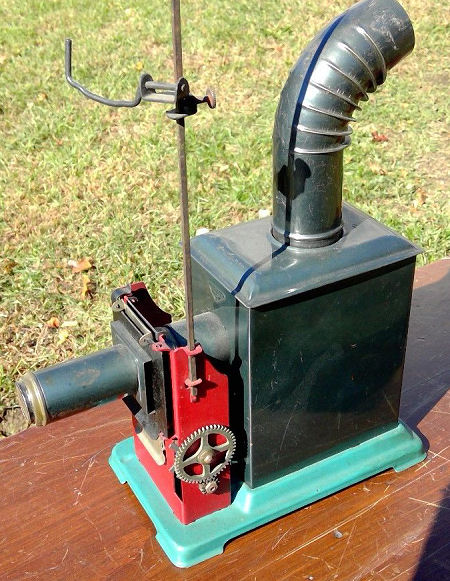 |
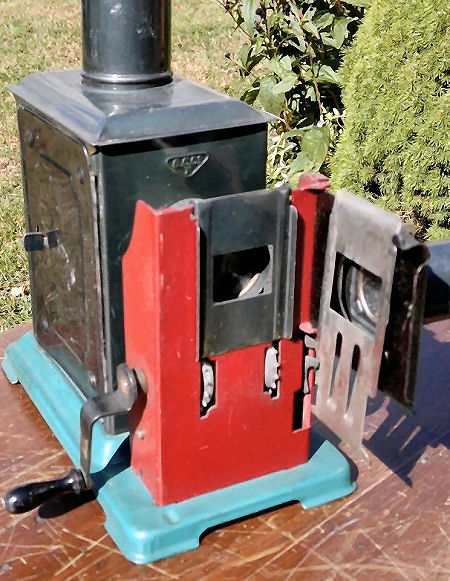 |
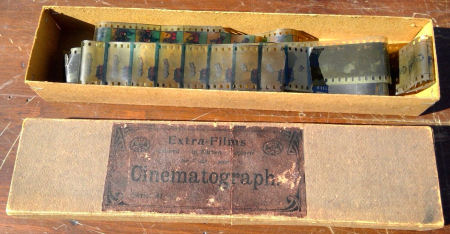 |
GEORG CARETTE
& CO.
This vintage Carette magic lantern and cinematograph is about 38 x 32 x 15 cm in size. It dates from approx. 1905 and is suitable for lantern slides of 3 cm wide and films (loops) of 35 mm wide.
|
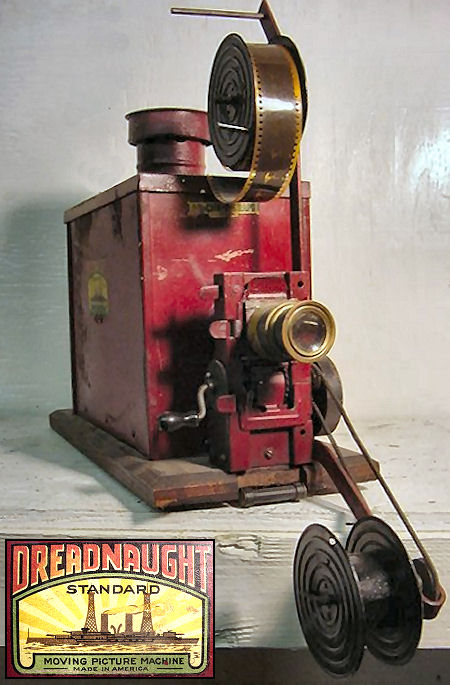 |
  |
|
American cinematograph, marked 'Dreadnaught'. |
|
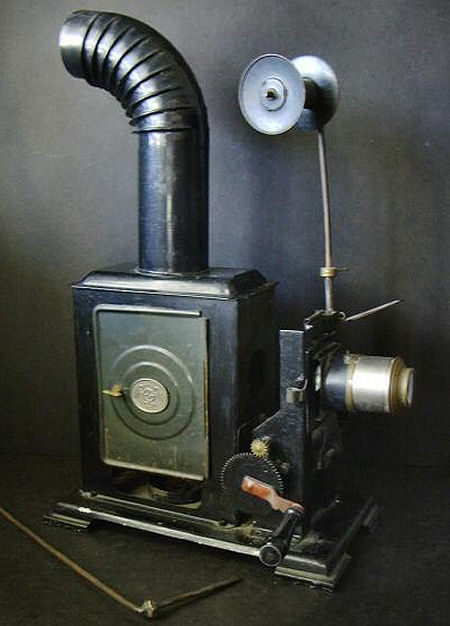
|
ERNST PLANK
Cinematograph.
|
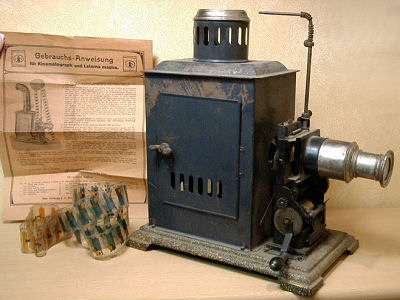
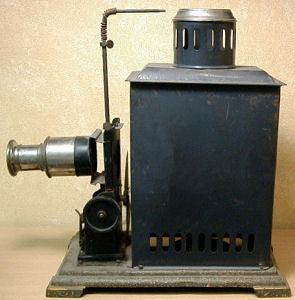
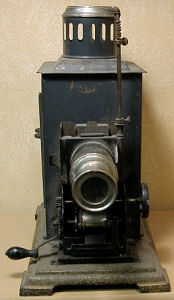 Cinematograph made by Johan Falk (J.F.) in Germany complete with the original manual in German, English and French. |
|
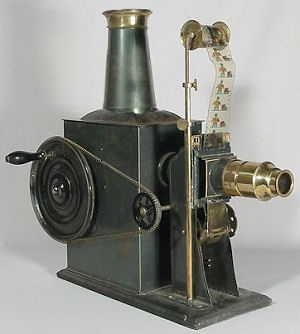
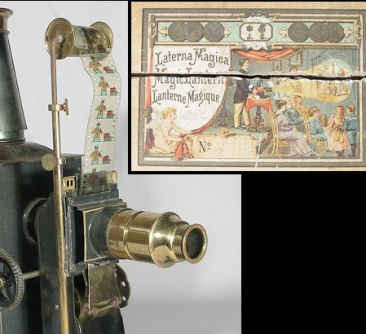
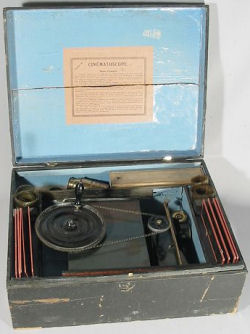 Beautiful cinematograph made by Jean Schoenner, Germany. The label on the wooden box shows the trade mark "J.S". The chest measures: 16,5" x 13" x 6,5" (42 x 33 x 16,5 cm). |
|
|
Japanese magic lantern,
LION. An uncommon cinematograph, made in Japan. The lens has a simple push/pull system for focus adjustment and a lever for image height adjustment. The lens holder flips open to one side to allow placing of the film onto a sprocket; a flywheel on the opposite side to the handle makes the film transport flowing. On the front of the base it has a stencilled text in golden lettering: “Made in Japan, LION”. |

|
|
LION VITASCOPE, c. 1930s.
|
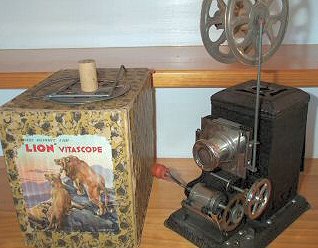 |
|
|
|
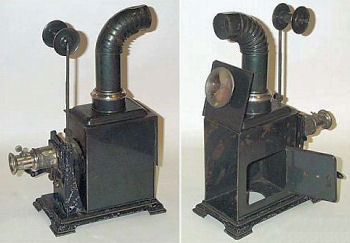
 Cinematograph S.W.C. Exhibition. Mechanism with sprockets for moving the film. The sprockets are turned by a crank handle on the side that also turns a shutter, which covers the lens while the film is being moved. Rack and pinion system that moves the lens. A plaque on the side door reads 'S.W.C. Exhibition'. The lantern stands about 14 3/4 inches (37.5 cm) tall.
|
|
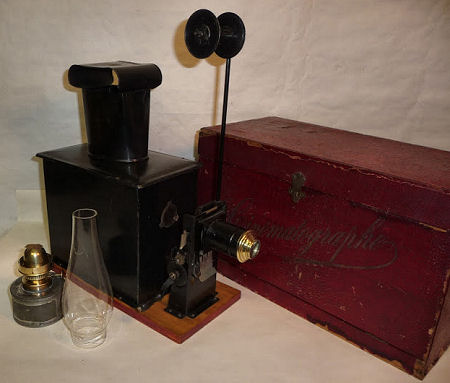

|
||
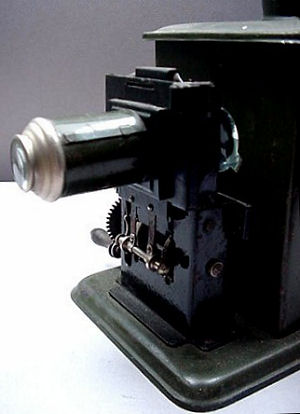 |
 |
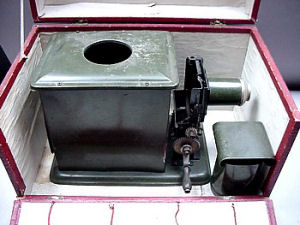 |
|
Lapierre - Demaria. Really attractive is the box with the word "Cinématographe" written in gold ornamental letters. This cinematograph was made after 1908 by the limited company Société Anonyme des Etablissements Demaria - Lapierre, when the two Lapierre brothers were obliged to amalgamate with the photographic manufacturer Jules Demaria. Box measures 11 1/2 "x 7 1/2" (29 x 19 cm). |
||
 This Bing cinematograph measures 13" (33 cm) high to top of chimney. There is a "BW" trademark impressed on rear. |
Two cinematographs made by Bing, Germany.  This Bing cinematograph has a holder for an electric bulb in stead of a chimney. |
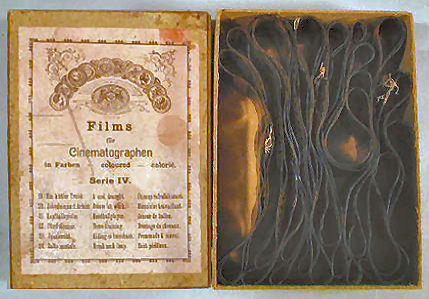
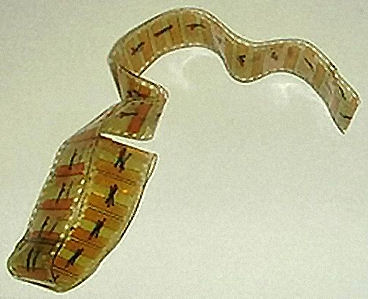
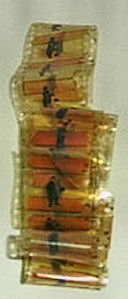 |
|
|
Cardboard box containing some vintage
cinematograph film strips (loops), c. 1800s. |
|
|
More cinematographs on the next
page.... |
|
| |
©1997-2021 'de Luikerwaal' All rights reserved. Last update: 17-05-2021. |
|

